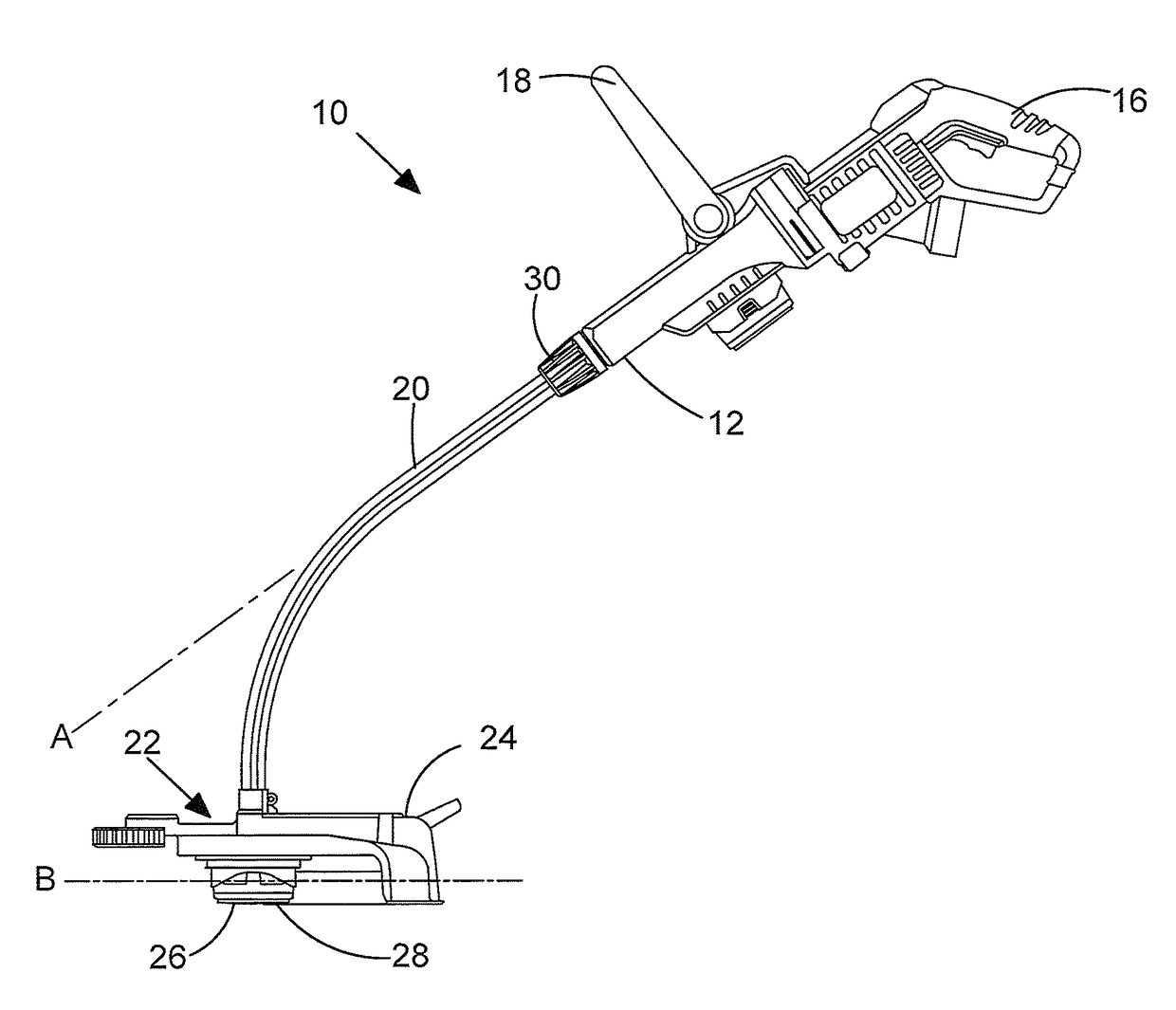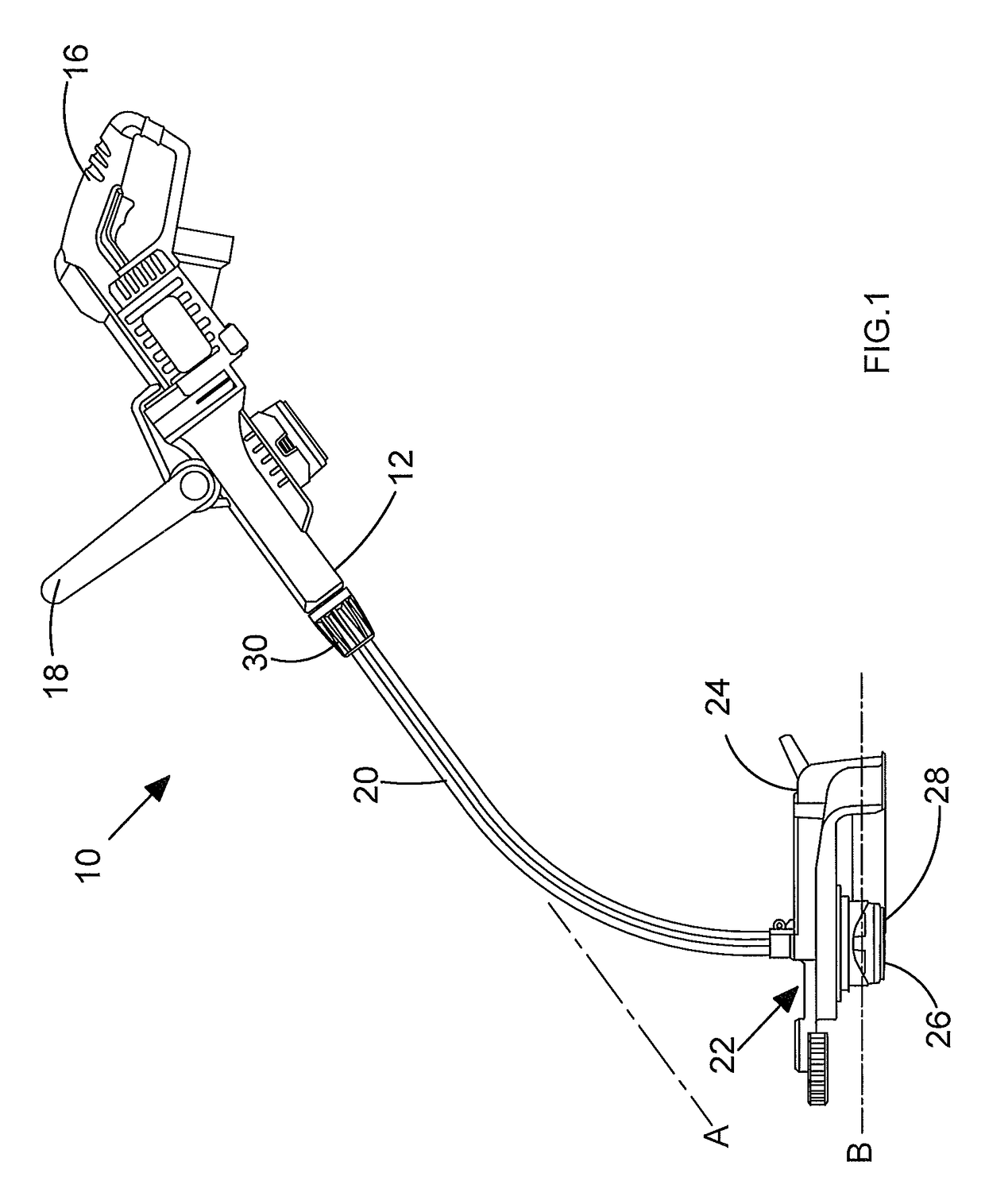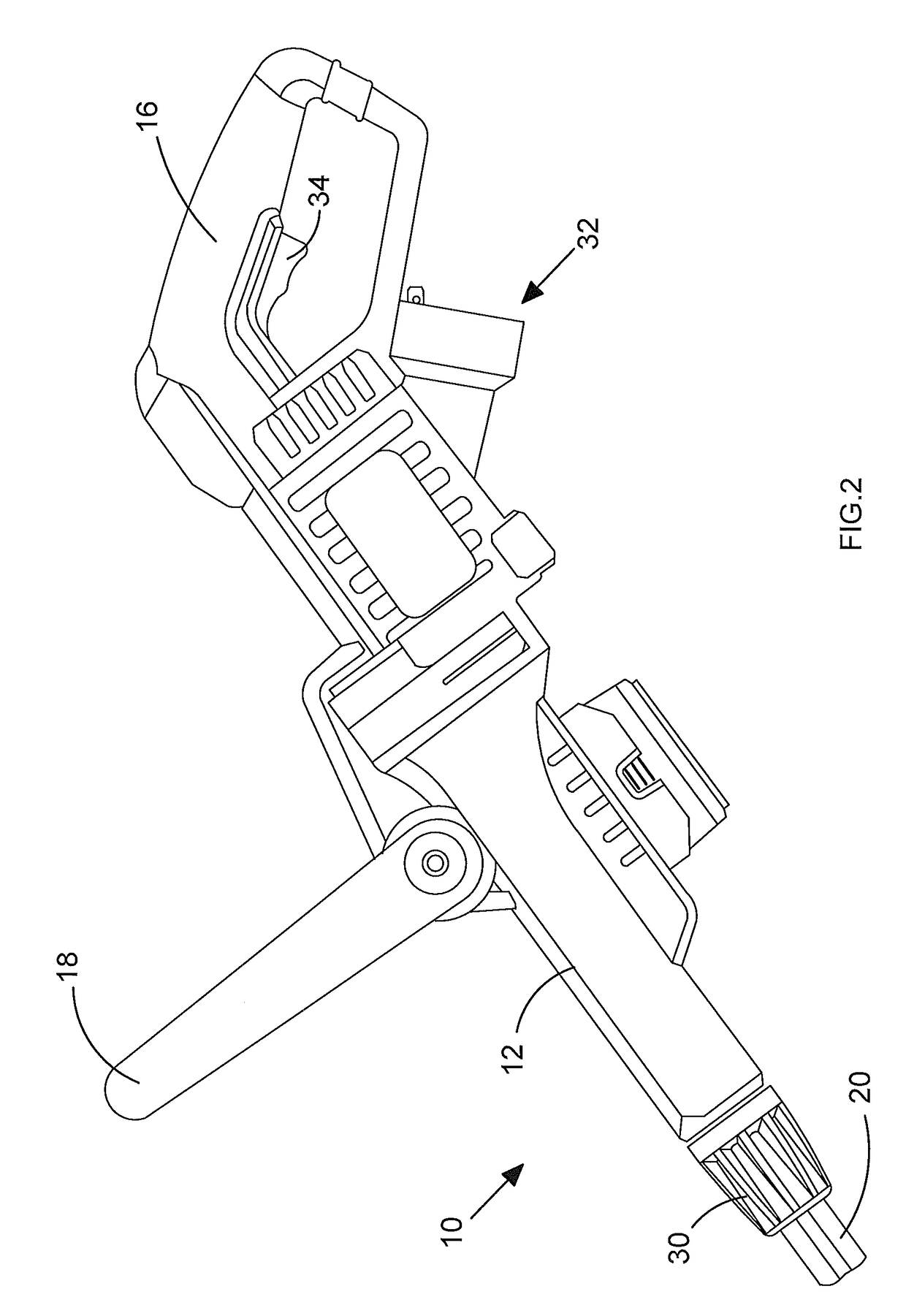Vegetation cutting device
a cutting device and vegetable technology, applied in the field of vegetable cutting devices, can solve problems such as noise pollution
- Summary
- Abstract
- Description
- Claims
- Application Information
AI Technical Summary
Benefits of technology
Problems solved by technology
Method used
Image
Examples
Embodiment Construction
[0034]FIG. 1 shows a side view of a vegetation cutting device 10. Typically the vegetation cutting device 10 is a string trimmer, but the vegetation cutting device can alternatively be other devices suitable for cutting vegetation like brush cutters. The vegetation cutting device 10 comprises a housing 12 for housing a motor 14 and other components which will be discussed in further detail with respect to FIG. 3. The housing 12 can comprise two clam shell portions which are fixed together to enclose the motor 14 and other components. The housing 12 has a first gripping handle 16 and a second gripping handle 18 so that the vegetation cutting device 10 can be operated with two hands by a user. The housing 12 is rotatably coupled to a first end of a shaft 20 and a cutting head 22 is fixed to a second end of the shaft 20. The cutting head 22 comprises a guard 24 and a rotary cutting means 26. The rotary cutting means 26 may comprise a flexible line element which is suitable for cutting ...
PUM
| Property | Measurement | Unit |
|---|---|---|
| speed | aaaaa | aaaaa |
| voltage | aaaaa | aaaaa |
| voltage duty cycle | aaaaa | aaaaa |
Abstract
Description
Claims
Application Information
 Login to View More
Login to View More - R&D
- Intellectual Property
- Life Sciences
- Materials
- Tech Scout
- Unparalleled Data Quality
- Higher Quality Content
- 60% Fewer Hallucinations
Browse by: Latest US Patents, China's latest patents, Technical Efficacy Thesaurus, Application Domain, Technology Topic, Popular Technical Reports.
© 2025 PatSnap. All rights reserved.Legal|Privacy policy|Modern Slavery Act Transparency Statement|Sitemap|About US| Contact US: help@patsnap.com



